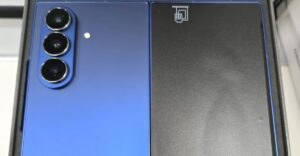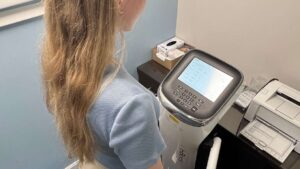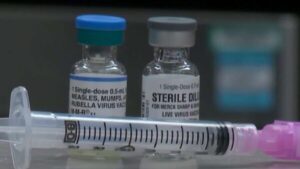
Astronomers typically focus their telescopes skyward, but on Monday, June 23, their attention shifted to Washington, D.C., as scientists from the Vera C. Rubin Observatory unveiled the telescope’s first images. The astronomical community has eagerly awaited this moment for over two decades, and Rubin’s initial findings have proven worth the wait.
The Rubin Observatory, a collaborative effort between the National Science Foundation (NSF) and the Department of Energy’s (DOE) Office of Science, recently completed its first 10 hours of test observations. In this brief period, the observatory captured stunning images and identified over 2,000 previously unknown asteroids, including seven near-Earth asteroids. While none pose an immediate threat to Earth, the data underscores Rubin’s potential as a transformative tool for planetary defense.
By conducting rapid and detailed surveys of the southern sky, Rubin promises to enhance scientists’ ability to locate and monitor space rocks more effectively than ever before. “As this camera system was being designed, we all knew it was going to be breathtaking in what it delivered, but this has exceeded all our expectations,” said Richard Binzel, a planetary sciences professor at MIT, to Gizmodo.
Revolutionizing Asteroid Detection
The data on these 2,000 new asteroids was promptly sent to the International Astronomical Union’s Minor Planet Center (MPC), the global authority on cataloging and disseminating information on small celestial bodies. The MPC has been preparing for Rubin’s data influx for years, upgrading its software to handle the massive volume of observations.
“When the first round officially came flooding in on Monday, it was nerve-racking and exciting simultaneously,”
Matthew Payne, MPC director, told Gizmodo.
This initial success is just a glimpse of what lies ahead. In the coming months, Rubin will embark on the Legacy Survey of Space and Time (LSST), a decade-long, near-continuous survey of the southern sky. This ambitious project will create an ultra-wide, ultra-high-definition time-lapse record of the universe. According to Payne, the MPC will receive approximately 250 million observations annually from LSST, a significant increase from the current 50 to 60 million.
Technological Marvel Behind Rubin
Rubin’s extraordinary capabilities are attributed to its cutting-edge instruments. The observatory boasts a unique three-mirror telescope design and the largest digital camera ever built, enabling it to conduct comprehensive sky surveys while detecting faint objects like asteroids. This technological leap bridges a crucial gap in existing planetary defense technologies, Payne explained.
Peter Veres, an MPC astrophysicist, emphasized the importance of Rubin’s depth in asteroid hunting. “You need to go as deep as possible,” he told Gizmodo.
“That’s what the LSST does, and none of the survey telescopes in the world that aim at planetary defense do that.”
Over the next decade, Rubin will observe the cosmos on an automated schedule using its 27.6-foot Simonyi Survey telescope. Each 30-second exposure will cover an area about 45 times the size of the full Moon, capturing wide-field images that will be stitched together to create a complete view of the southern sky every three nights.
NASA’s Silence and Budget Woes
Despite Rubin’s potential to revolutionize planetary defense, NASA has remained conspicuously silent about the observatory’s launch and discoveries. This reticence is surprising given Rubin’s global attention and its implications for NASA’s own planetary defense efforts.
Keith Cowing, an astrobiologist and former NASA employee, expressed bewilderment at NASA’s lack of enthusiasm. “It’s a warp drive version of finding asteroids,” he told Gizmodo.
“You’d think that the planetary defense people would be in the front row cheering it on, saying, ‘send me the data!’”
However, NASA has not publicly acknowledged Rubin’s findings and declined to comment on its contributions to planetary science and defense.
On June 24, NASA’s Office of the Inspector General released a report on the agency’s planetary defense strategy, briefly mentioning Rubin alongside NASA’s upcoming NEO Surveyor. The report noted that these new observatories are expected to significantly increase the number of tracked near-Earth objects, necessitating more follow-up observations.
According to Cowing, NASA’s silence may be a symptom of internal turmoil. The agency faces potential budget cuts, with President Donald Trump’s 2026 budget proposal threatening to slash NASA’s science funding by 47%, potentially jeopardizing over 40 missions.
“The only good news is what didn’t get shot,”
Cowing remarked, suggesting that NASA employees are in survival mode amid uncertainty about their jobs and projects.
Future Implications for Planetary Defense
As NASA grapples with budget constraints, it remains uncertain whether the agency will fully capitalize on Rubin’s data. Although NASA’s Planetary Defense Coordination Office currently leads global efforts, this could change if the agency cannot leverage Rubin’s contributions effectively. Nonetheless, Binzel remains optimistic about the future. “Great nations do great science,” he said.
“I continue to have faith that our nation will continue to do great science.”
In the meantime, Rubin’s groundbreaking work continues to offer hope for a safer future, potentially enabling early detection and mitigation of asteroid threats. As the observatory embarks on its decade-long survey, the astronomical community—and indeed the world—will be watching closely.






